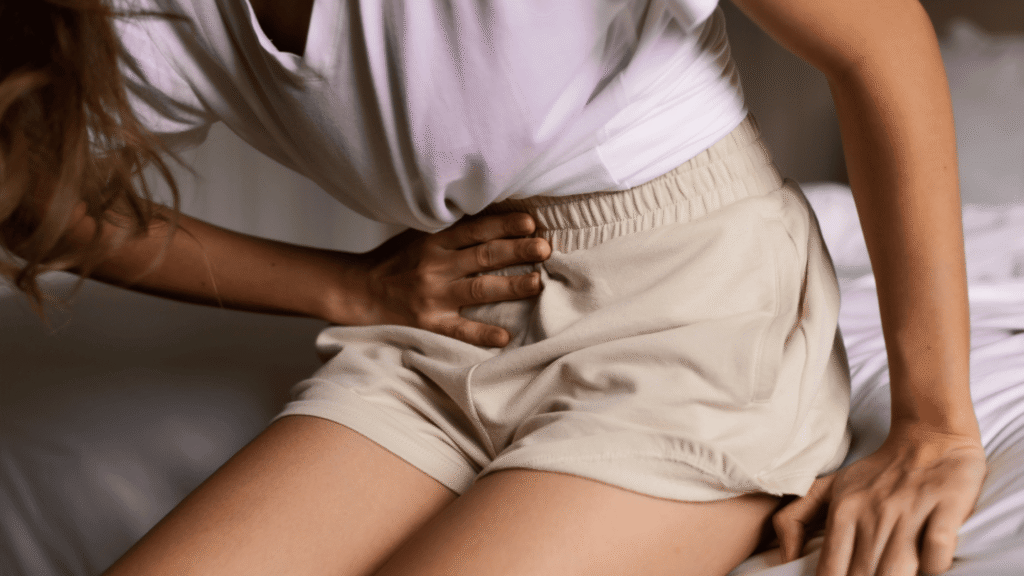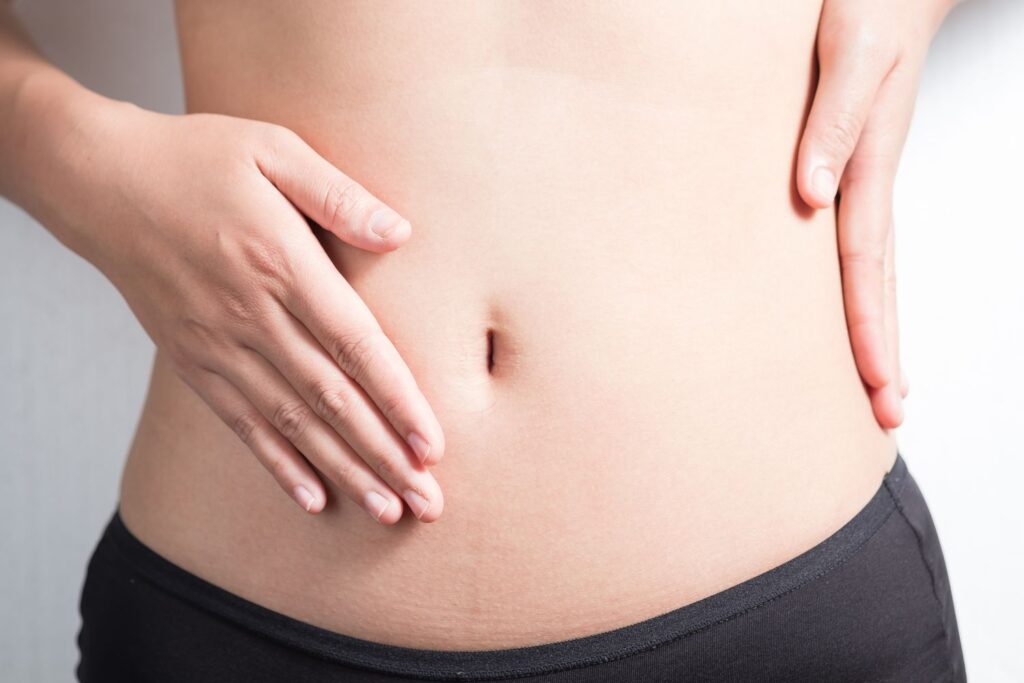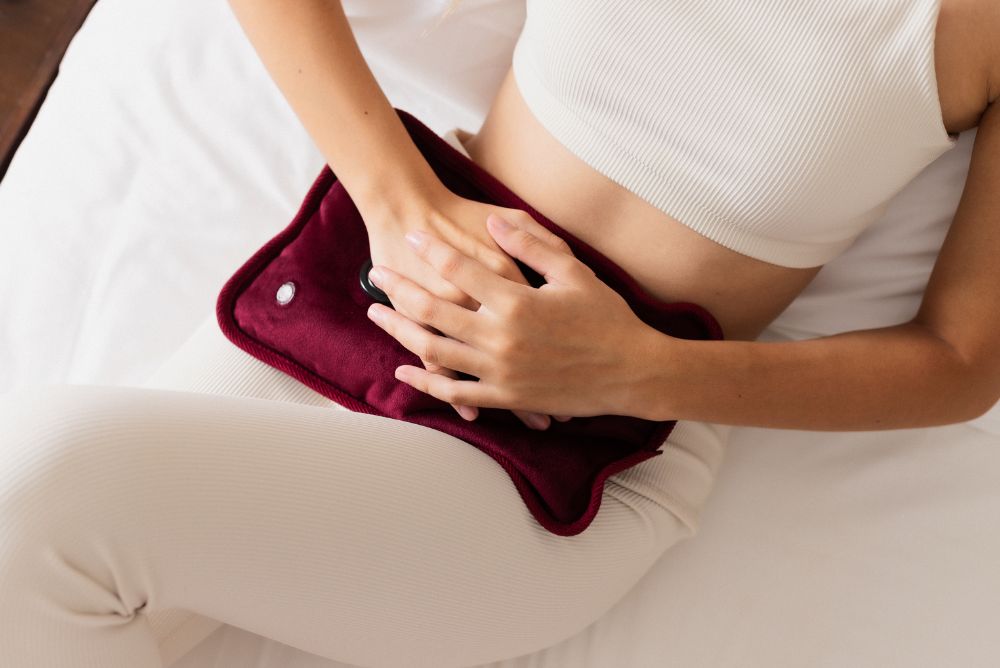Ovulation pain, or Mittelschmerz, arises when an egg is released from the ovary, which usually happens in the middle of the menstrual cycle. Period cramps happen later, right before or during your period, when the uterus contracts to get rid of its lining. Both can cause lower abdominal cramping or pressure, but their timing, length, and feeling differ.
Many women often wonder which one they are having when they have ovulation pain or period cramps. Both cause pain in the abdomen and can happen at the same time in the menstrual cycle, which makes it easy to mix them up. But knowing the difference is vital for tracking your cycle and maintaining reproductive health.
Recommended: Diet and Lifestyle Changes to Help with PMDD Symptoms
This article will talk about what causes ovulation discomfort and period cramps, how they are different, and simple techniques to tell which one you could be feeling. You can better control your menstrual health by learning to recognise these signals and understand your body’s natural patterns.
What Is Ovulation Pain (Mittelschmerz)?
Ovulation pain, also known as Mittelschmerz (a German word meaning “middle pain”), is the discomfort some women feel around the middle of their menstrual cycle. When one of the ovaries releases an egg, which is a normal part of the menstrual cycle, ovulation takes place. This period normally happens two weeks before the next menstruation starts.

The pain is often felt on one side of the lower abdomen, depending on which ovary is releasing the egg that month. It can feel like a dull ache, a sharp pang, or moderate cramping that lasts for a few minutes to a couple of days. Around this time, some women may also notice minor spotting or a change in their vaginal discharge.
Recommended: Painful Ovulation (Mittelschmerz): Causes, Symptoms, and How to Find Relief Naturally
Ovulation pain is usually not harmful, but it can be a helpful clue that your body is ovulating, especially if you are trying to get pregnant or keep track of your fertility.
What Are Period Cramps?
Menstrual cramps, which are most times referred to as period cramps or dysmenorrhea, are the dull or throbbing pains that many women feel in their lower abdomen right before or during their period. These cramps happen as the uterus contracts to help get rid of its lining, which is a natural component of the menstrual cycle.
The contractions are triggered by hormone-like substances called prostaglandins, which cause the uterine muscles to tighten. Higher levels of prostaglandins usually lead to stronger cramps and discomfort. The pain may also spread to the lower back and thighs and can sometimes be accompanied by nausea, fatigue, or headaches.
Most period cramps last between one to three days and usually ease as the flow becomes lighter. Menstrual pain is common and usually not dangerous, but if it is very bad or lasts a long time, it could be an indication of a more serious problem like endometriosis or fibroids. You should see a doctor about it.
Why Ovulation Pain and Period Cramps Are Often Confused
People sometimes confuse ovulation pain with period cramps because they both feel like dull aches, pressure, or cramping in the lower abdomen. Both are associated with changes in hormone levels and the reproductive system, making it challenging to distinguish between them unless you closely monitor your cycle.
Another reason for the confusion is their location. Both types of pain are felt in the pelvic area, and while ovulation pain usually occurs on one side, some women experience it centrally or feel discomfort that shifts from one side to the other, making it resemble menstrual cramps.
Timing is also a big part of the mix-up. Women with irregular cycles may feel ovulation pain earlier or later than expected, which may make them fear their period is about to start. To tell the two apart, just note when and how the pain occurs and learn your body’s rhythm.
Recommended: What Does Brown Spotting Before Period Mean?
Key Differences Between Ovulation Pain and Period Cramps
Although ovulation pain and period cramps can feel similar, there are several clear differences that can help you tell them apart. The main distinctions lie in their timing, location, duration, and associated symptoms.
1. Timing
Ovulation pain happens about 10 to 14 days before your next period, which is about halfway through your menstrual cycle. Period cramps occur when the uterus contracts to shed its lining, just before or during your period.
2. Location

Ovulation pain is commonly felt on one side of the lower abdomen, depending on which ovary is releasing the egg that month. Usually, period cramps hurt in the middle of the lower abdomen, although the discomfort can also migrate to the lower back or thighs.
3. Duration
Ovulation pain usually lasts for a few minutes to two days, while period cramps can last for one to three days or longer, depending on how heavy your flow is.
4. Type of Pain
Ovulation pain can feel like a sharp twinge, mild pinch, or dull ache, whereas period cramps are usually more intense, throbbing, or cramping in nature.
5. Other Symptoms
During ovulation, you can notice clear or flexible cervical mucus, light spotting, or a higher sex drive. Bleeding, exhaustion, bloating, and even nausea or mood changes can happen with period cramps.
Recommended: Spotting vs. Your Period: How to Tell the Difference
Knowing these important changes can help you understand what your body is trying to tell you and make it easier to keep track of your menstrual and reproductive cycles.
How to Identify Which Pain You’re Feeling
Tracking your cycle, observing your body, and noting the characteristics of the pain can help you determine whether you’re experiencing ovulation pain or period cramps. Paying attention to these details can help you better understand your reproductive health.
1. Keep Track of Your Period
Use a calendar or a period-tracking app to write down when your period starts and ends. Ovulation normally happens around the middle of the cycle; thus, pain at this time is more likely to be associated with ovulation.
2. Observe the Location of the Pain
Ovulation pain is usually on one side of the lower abdomen, but it can move monthly. Period cramps normally happen in the middle of your body, although they can also happen in your lower back or thighs.
3. Note the Duration and Intensity of the Pain.
Ovulation pain normally lasts from a few minutes to a couple of days and is usually mild to moderate. Period cramps usually last one to three days and seem like they are getting worse or more painful.
4. Check for Accompanying Signs
Ovulation may come with light spotting, changes in cervical mucus, or increased libido. Period cramps occur alongside menstrual bleeding, bloating, fatigue, or mood swings.
Recommended: 10 Causes of Spotting During Ovulation
By combining these observations, you can more accurately determine whether your discomfort is linked to ovulation or menstruation, which can also help with fertility tracking or managing symptoms effectively.
Natural and Medical Ways to Relieve Both Types of Pain
Both ovulation pain and period cramps can be uncomfortable, but there are several ways to ease the discomfort, ranging from simple home remedies to medical treatments.
1. Natural Remedies
- Heat Therapy: Putting a heating pad or warm compress on your lower belly might relax your muscles and ease cramps.

- Light Exercise: Gentle activities like walking, yoga, or stretching can improve blood flow and ease tension.
- Hydration: Drinking plenty of water helps prevent bloating, which can worsen cramps.
- Dietary Adjustments: Eating anti-inflammatory foods, such as fruits, vegetables, and whole grains, may help reduce pain. Limiting caffeine and salty foods can also ease symptoms.
- Relaxation Techniques: Deep breathing, meditation, or taking a warm bath can help reduce stress-related muscle tension.
2. Medical Options
- Over-the-Counter Pain Relief: Nonsteroidal anti-inflammatory drugs (NSAIDs) like ibuprofen or naproxen can relieve both ovulation pain and menstrual cramps.
- Hormonal Birth Control: For women with severe menstrual cramps, hormonal contraceptives can regulate cycles and reduce cramping intensity.
- Prescription Medications: In cases of extreme pain or underlying conditions such as endometriosis, a doctor may prescribe stronger medications or specific treatments.
Combining natural strategies with medical options, when needed, can provide effective relief and help you manage discomfort during both ovulation and menstruation.
Final Thoughts
Knowing the difference between ovulation pain and period cramps is a big part of getting to know your body. They both can hurt in the lower abdomen, but they happen at different times, in different places, last for different amounts of time, and come with different symptoms. Knowing about these distinctions can help you keep track of your period, plan for getting pregnant, and deal with pain better.
You may ease your pain and keep your reproductive health in better shape by paying attention to your body, recording the specifics of the pain, and applying natural or medical therapies when necessary. Additionally, observing these signs could assist you in identifying pain that is unusual or severe enough to require medical attention.
Knowing your cycle and recognising the signs of ovulation and menstruation gives you more control over your health. This makes it easier to adapt to your body’s needs and stay healthy overall.
